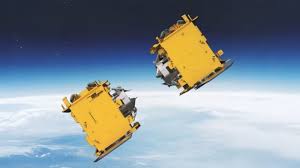ISRO's SpaDeX Mission: A Leap Forward in Space Technology

Sriharikota, Andhra Pradesh - The Indian Space Research Organisation (ISRO) has etched another milestone in its illustrious history with the successful execution of the Space Docking Experiment (SpaDeX) mission. Launched from the Satish Dhawan Space Centre on December 30, 2024, aboard the PSLV-C60 rocket, this mission not only signifies a major leap in India's space capabilities but also marks India as the fourth nation to achieve autonomous space docking, following the USA, Russia, and China.
Mission Overview
Objectives and Components:
- SDX01 (Chaser) and SDX02 (Target): These two satellites, each with a mass of approximately 220 kg, were the stars of the mission. SDX01 was tasked with autonomously navigating, rendezvousing, and docking with SDX02 in orbit.
- Autonomous Rendezvous and Docking (AR&D): The core technology demonstrated was AR&D, crucial for future space applications like refueling, repair, or assembly in space, and for human spaceflight missions.
Launch and Initial Phases:
- The mission was launched into a 500 km orbit, with both spacecraft deployed from the same rocket but at different times to simulate a real-world scenario where one spacecraft would chase another.
- Initial attempts at docking on January 7 and January 9, 2025, were postponed due to technical issues related to sensor calibration and orbital adjustments.
The Docking Process:
- On January 15, 2025, after meticulous adjustments and corrections, the chaser satellite approached the target within three meters, employing a series of fine maneuvers, including attitude control and velocity matching.
- The actual docking was a testament to ISRO's engineering, involving mechanical latches, electromagnetic force for capture, and sensors for precise alignment.
Post-Docking Operations:
- Following a successful dock, plans for undocking, redocking, and potentially power transfer experiments were set forth, showcasing not just the ability to connect but also to operate as a single entity in space.
Technological and Scientific Significance
- Innovation in Spacecraft Design: Both SDX01 and SDX02 were equipped with novel systems for navigation, control, and communication, tailored for the rigors of space docking.
- POEM-4 Utilization: The PSLV's fourth stage was repurposed as the PSLV Orbital Experiment Module-4 (POEM-4), hosting 24 experimental payloads. This includes technology demonstrations like solar sail deployment, microgravity experiments, and Earth observation equipment, extending the mission's scientific yield.
Implications for Future Missions
- Bharatiya Antariksh Station: This mission's success is pivotal for India's planned space station, providing the foundational technology for assembly and maintenance in orbit.
- Chandrayaan-4 and Beyond: The docking technology will be instrumental for complex lunar and deep space missions, where in-space assembly or refueling could extend mission capabilities.
- Global Collaboration: The achievement opens doors for international cooperation, where India can contribute significantly to global space projects requiring docking technologies.
Celebrations and Future Plans
ISRO Chairman Dr. S. Somanath hailed the mission as a "giant leap for Indian space technology," and social media platforms, particularly X, lit up with congratulations from around the world. ISRO plans to continue monitoring the docked satellites for further experiments, potentially including the transfer of data or energy between them, showcasing even more applications of this technology.
This mission not only cements India's place in the global space arena but also promises exciting developments in space science, technology, and exploration. With each successful mission, ISRO continues to push the boundaries of what's possible, fostering a new era of spacefaring for India.
